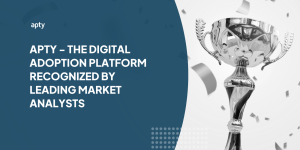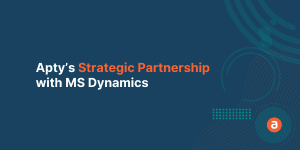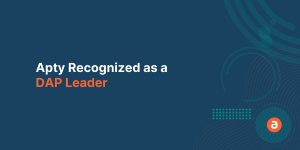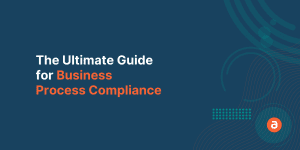The term Business Process has been in existence for a century, but with time its context has changed. But one thing is consistent that is its importance. Irrespective of your industry, the business process help to streamline the business and drive the organization towards a goal.
Creating a business process is relatively easy than following it, as its success relies on people who follow it. This adds to the complexity; to overcome this, the organization creates rules and regulations called compliance.
Today enterprises are focusing on becoming business process compliant to achieve efficiency and meet the regulations of state agencies. Business process compliance should be considered throughout the business process lifecycle and should never be an afterthought.
Poor process compliance leads to poor data, which causes an average loss of $15 million per year.*
Like this, several aspects of the business get affected because of poor business process compliance. Due to this, organizations must use methods and tools that can help to streamline the business processes and avert compliance issues.
What is Business Process Compliance?
Business Process Compliance ensures that business processes are in line with the company’s policies and procedures.
Today most of the business functions are being digitized, which makes the organization’s life simple. But just by going digital, the problem of the organizations won’t get solved; they have to ensure process compliance as well.
Business Process Compliance is a tool that helps the organization to receive clean data, stay on track, and worry less about how the employees are following the process.
With every aspect of business being digital, the number of applications that the organization uses increases, adding to the complexity of business processes. As a result, ensuring compliance becomes difficult and is one of the most challenging aspects for any organization.
Why do people resist new processes?
Businesses invest millions of dollars to create business processes that drive efficiency and help them achieve growth.
They create detailed documentation and training programs that help the employees. But even then, the desired results are not achieved, and the major reason is that the employees were unable to follow the designed business process.

In short, they were not compliant.
This could make Process Managers and other change leaders impatient, especially when a process is created after investing a lot of time and effort.
You may face internal resistance because-
- Employees might be wondering what they will achieve by following the new process; in this case, it is ideal for showcasing the benefit they might achieve.
- Sometimes employees are stuck in the routine, getting used to it. It becomes difficult for them to break the routine and accept change as it needs new learning, mindset, and approach.
- Even if an organization provides a comprehensive learning experience, it could be challenging for employees to learn.
- Another problem is that complex processes make it difficult for employees to understand new processes. It happens because of the exponential rate of change. Rather, the process change should happen incrementally, giving the stakeholders time to adopt it.
Factors affecting business process compliance
Business process compliance undergoes multiple changes at any time, which can happen because of anything. Business processes compliance changes regularly because of multiple factors like-
1. External Factors:
HIPAA, SEC, FINRA, and ISO standards are complex, and merely reading through their guidelines won’t suffice. You need to onboard experts who can help the organization understand the intricacies associated with these standards.
Then you have to figure out ways to design processes that comply with the rules and ensure that everyone in the given environment can follow them.
Secondly, decode the compliance for your employees so that they can follow it, or else it could lead to failure.
Lastly, coordinate with the external stakeholders to get updated about any new guidelines because staying on top will give you time to align with their expectations and avoid penalties.
2. Internal Factors:
Organizations should align their change management initiatives, digital transformation efforts, and processes with business rules and regulations.
Training programs will help employees follow the pre-defined processes by being compliant. It will help organizations to get clean data and make crucial decisions.
3. Industry Factors:
Any industry in today’s world is dynamic and ever-changing. Businesses have to follow the policies created by the body that is governing the industry.
Implementing it and ensuring business success becomes complicated, and this is where organizations have to manage risk.
They have to coordinate with external experts and utilize the expertise of internal subject matter experts to align the industry policy with business goals.
It can be difficult, but if done properly, then they can set their path towards success by being well within the industry rules.
Other important things to remember-
- Analyze whether the employees can initiate the processes and go through them in an intended manner.
- Measure the impact of new processes and check whether it is driving the expected results or not.
- Closely monitor the process and check if compliance is at risk.
Related Read- Business Process Management Challenges
Benefits of Business Process Compliance
A. Customized process design
Every organization, department, and job function is different, and as a result, businesses create customized processes that align with their needs.
Often these customized processes are not covered in the generic training programs, and specialized sessions are arranged. However, employees forget 90% of what they learn in a month; this could fail them from being compliant.

They must be guided, and their knowledge must be reinforced through modern training tools. This will help them to properly follow the guidelines and processes.
It also helps organizations to go for more customizations and rules as modern tools like the Digital Adoption Platform helps employees to adopt complex processes in an intended manner.
B. Condition driven process
A process can contain steps that help users initiate a new process. If a user is presented with options during a process, there are choices available to initiate a particular process out of many others. This is called a conditional process, initiated based on the type of interaction or response that the user gives.
Some people can identify it as a customized process, but it is different as it is not tailored for a particular user group. Rather it is triggered based on the input; it helps in business process compliance as the input registered through this method is usually refined. It runs on ‘If/else’ logic and helps users to stay on track; this paints a clear picture for leaders to take action.
C. Documented Record:
For business process compliance, organizations often invest in a tool that can help them to track and document all the steps taken by the users. It helps to maintain internal quality and identify the exact moment of occurrence.
It also helps businesses to plan for the future and optimize their business process to achieve their goal in record time.
It helps the organization come out of the traditional record-keeping ways that rely on manual documentation and recall value of employees.
But with automated tools coming into play, the documentation process has become seamless. It not only helps the organization to be compliant but also helps them to save money.
D. Notify the users:
To ensure process compliance, businesses deploy a notification mechanism that informs the users. This helps users to take action and accomplish their tasks. The notifications are triggered within the right application and at the right time.
The added advantage for the organization is it can target it based on the user group profile and provide contextual messages. This ensured that the processes were followed without any failure.

Other communication channels like emails and conference calls fail in this regard, as information passed through these channels is either ignored or forgotten. But when the notification is pushed within the application that the employees use, it triggers action and helps them complete the tasks.
Notifications can be activated based on time or event, and a Digital Adoption Platform helps you achieve that.
E. Real-time Visibility:
Process compliance needs visibility, and organizations should use applications that can help them get real-time data.
Enterprises are working from different geographical locations, and as a result, the chances of having the same information at all times will be less. This could lead to inconsistency and eventually to process failure.
Organizations are investing in real-time visibility to understand the root cause of the problem. It will help the stakeholders who want to drive the outcome to take action at the right moment. It also helps to identify why and how the problem is originating.
It also helps them understand the types of problems different users face and create customized solutions accordingly.
This solution is crucial for business process compliance and helps optimize the process as it indicates the unnecessary steps that negatively impact.
There are multiple solutions to ensure compliance. However, these solutions go beyond ensuring compliance and help in more than one way to drive the organization towards its goals.
Related Read- How to ensure business process compliance with DAP
How to improve business process compliance
The business process is a subset of change management strategy and plays a crucial role in improving the organization’s bottom line. Following these processes is complex, and business process compliance comes in.
It streamlines the business and helps the organization to meet the auditing requirements and improve business process efficiency. Processes involve different groups of users and are not standalone entities. Collaboration, understanding, buy-in, and adoption are required to improve existing processes.
i. Understand the current state of the process:
Before implementing new processes and compliance laws, business leaders need to assess the current state. It will help you to identify which processes are slow and why they are? is there any team that is relatively more affected by these existing processes? are employees who are part of these processes satisfied with the outcome? If the organization continues with the existing set of processes, will it still be enough to achieve the business goals?
Once the business leaders have the answer to all these questions, they have to start preparing and promoting the new process within the organization. This will spike the interest of the employees and get them excited to adopt new processes for their own sake.
ii. Assign Roles to Stakeholders:
To implement and streamline the processes, the organization must assign roles to ensure that processes are deployed and followed in the intended manner. These roles can vary from one company to another. However, it is important to involve subject matter experts, departmental heads, project owners, process architects, process compliance consultants, and training managers.
You don’t need different people to handle all these roles, as a single individual can be a part of more than one role, but having a role assigned defines the ownership. It reduces friction, and having a compliance expert in the panel allows the organization to process compliant while formulating the structure of the new process.
iii. Communicate the process updates:
Processes are complex and difficult to implement the success of it depends on the end-users as they are the ones who are going to use them. So, keeping them in the dark or having an ineffective communication strategy is a recipe for disaster.
The organization must keep the employees in the loop and inform them about the changes they will make to the system or process.

Assign a point of contact through which they can get all their doubts cleared and get a better understanding of where the organization is proceeding.
Once the implementation is done, it might be difficult to inform each nuance of the process through emails, and this is where companies must use in-app notifications. It will help you to inform them about any changes instantly. In-app communication is fail-proof because end-users have to accept the message before proceeding further within the application.
This ensures that employees are always informed about new process compliance laws and application changes.
iV. Deploy the process:
Department heads are the key to a successful process implementation as they can motivate their respective teams to embrace the new processes and use them in a defined way.
They are the ones who can understand how their team is feeling about the shift and manage the implementation in line with their team’s expectations. They act as a bridge between the implementation team and the end-users.
They also understand how different user groups within a department might handle the change in the process. They can communicate the expectation of the employees to the project team and vice-versa.
Before and during the process of implementation, it is important for leaders to-
- Note how the new process will shape your department and which KPIs will be important to track the success.
- Coordinate with team leaders and managers to define success and how each member within a team will contribute towards it.
- Identify ‘champions’ who understand the impact that can be created through the new process and could motivate the rest of the employees within the department.
Identify what type of training method is suitable for the employees and information to the project team so that they can create relevant training for your team.
Create a supporting channel that can address the employees’ queries at all times. You don’t need the IT support team at all times; rather, a simple in-app support tool that stays within the employee’s application can do the trick.
V. Ensure successful adoption
Create a proper process adoption strategy to help your employees navigate the new processes and compliance policy. Ideally, organizations go with the training program, which makes employees familiar with the processes, but it lacks in ensuring process compliance.
This is where a process adoption strategy comes in; it helps you understand the process adoption gap and select a tool that can ensure process adoption and compliance.
Usually, a Digital Adoption Platform is the right fit as it guides the employees at the exact point of need. It helps them accomplish their tasks by following the set processes while being compliant.
Vi. Optimize the process:
Process implementation may be a one-time thing, but optimization is an ongoing process. It helps the organization identify the gaps in the existing processes and alter them to meet business and employees’ needs. Organizations can couple the power of BPM and DAP, helps with process optimization and allows you to create content that is easy to follow.
Related Read: An Ideal Guide to Improve Business Process
How companies can make business processes quicker & efficient?
Business processes are complex, and making them quicker is challenging because it could mean that you are compromising on the actual functionality.
Historically, organizations relied on training methods or tools that expect employees to remember everything they learned in the session and implement it there while going through a process.
Thanks to the forgetting curve, 70% of what employees learn in a training program is forgotten in 24 hours. This makes it difficult for the employees to process compliant and accurate.

So, it concludes that the worst thing that any organization can do is to leave their employees on their own when process compliance is at stake.
Organizations must use a Digital Adoption Platform powered by a data validator that nudges the employees if they enter data incorrectly. Some Digital Adoption Platforms have capabilities to not allow employees to save their progress unless they are complaint and Apty is one of the few Digital Adoption Platforms that enable the organization to do that.
Now that we have understood the accuracy part, it is time to explore how a Digital Adoption Platform can help to quickly adopt the processes.
First, it helps to analyze application engagement, and it is not limited to cliché metrics like the number of users or avg session of the users. Rather it helps you to find how the user engaged, what path they took, and what action they performed. This helps to plan the organization to optimize its processes and create content that is relevant for different users.
It prevents employees from getting overwhelmed with new processes and help them to focus on their job. It allows them to effortlessly adopt new or revamped processes by being compliant.
This is one of the aspects of a Digital Adoption Platform that sets it apart from other compliance training methods as it teaches and ensures compliance.
Way Ahead!
It is challenging to create processes that align with the organizational goals, and when you add the element of process compliance, it increases the process complexity.
But process compliance acts as a guard rail; even if it is not going to add any value,, it prevents the catastrophic effect that might occur in its absence.
Process compliance is an effect of both external and internal factors. Having a method to enforce it is important; while companies can invest in new training methods, they need something that can monitor and guide the employees throughout their journey.
A Digital Adoption Platform rightly fits in this category and helps the organization achieve compliance and trust the data they receive.
It is all about facilitating your already talented workforce with a tool that works seamlessly and blends well with their daily working process or routine.
*Source: Cost of poor data













